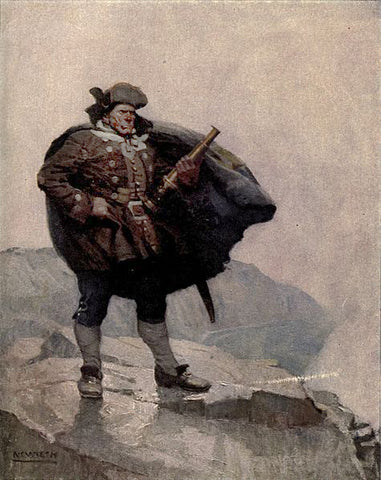 Pirates!
Pirates!
Perhaps no other class of seafarers is quite so famous – or infamous!
But tying shipwreck coins to actual pirates is rare – most treasure galleons sank due to hurricanes, poor navigation or lack of upkeep. The pirate ship Whydah Gally, sank in 1717 and discovered by Barry Clifford in 1984, is the only documented pirate ship to ever be discovered. But the Treasure of Isla de Muerto (The Treasure of Dead Man’s Island) is an interesting exception… for her cache of glittering treasure went to the bottom because of – yes, you guessed it – PIRATES!
For unknown reasons, perhaps because her mint shipment was late, Santa Maria de la Consolación began her solitary voyage up the West Coast of South America where she was to land at present-day Panama. It was there her precious treasure would be loaded on to a mule train, for the overland transport to the Atlantic, Cuba and then home to Spain.
But, Consolacion, alone and unprotected, would never see home. Spied by Bartholomew Sharpe, a British pirate sailing the seas off of Ecuador (where Spanish ships would stop to re-provision) in search of a rich prize, she was soon pursued by the pirate ship.
Heavy and treasure-laden (probably trying to make it to safety at the Spanish settlement of Guayaquil, Ecuador), Consolacion struck a reef off of Santa Clara Island. When the passengers abandoned the foundering ship, the crew set fire to her in an attempt to keep the pirates from claiming the treasure.
Legend says that the pirates were so enraged they took their revenge on the crew (some versions of the story say the pirates beheaded the crew, or "Spaniards") before they could reach the safety of the island, and thus the island was nicknamed “Dead Man’s Island.”
This is legend, with no historic documentation to support it.
What we do know: 1. Consolacion was burned to the water line as was customary in cases where a grounded ship could not be re-floated. This was done in hopes of returning to salvage the contents, or prevent others from "picking the bones dry" of valuable ships' fittings, etc. 2. From the sea, Santa Clara Island looks like a dead man lying on his back under a shroud - and navigators of the time called it “El Muerto.” This name is actually recorded in a chart book Sharpe commandeered when he and his crew took another Spanish ship about that same time.
In any event, legend says Sharpe and his men tried in vain to recover the treasure, and failed to pocket a single piece of eight.
Ironically, later, Spanish attempts also failed. And so Consolacion’s treasure lay undisturbed, at the bottom of the sea, until modern day treasure salvors first began bringing “Pieces of Eight” to the surface in 1997.
We are the gold standard in meticulously researched Certificates of Authenticity, and our multi-page Certificate details the story of the Treasure of Isla de Muerto and even teaches you how to read your treasure coin!
Personal note from Robert: While I am partial to the coins I have recovered on the 1715 Fleet, Consolacion was carrying all sizes of the the stunning Pillars and Waves style Spanish “pieces of eight.” From the large, silver dollar sized 8 reales, to 4, 2, 1 and even some rare 1/2 reales, most minted in Potosi, Upper Peru (present day Bolivia). Only about 25 percent of the Spanish silver coins minted at that time were the 4 reales and smaller denominations, making them extremely rare and highly prized today.
Over the years we have purchased coins from some of the original salvors, and it has been fun swapping “treasure stories,” the guys explaining to me the different areas where the coins were recovered. Even though we were thousands of miles apart, conversations would often start with the unmistakable sound of a beer pull tab, or the tinkle of rum being poured over some ice.
Due to their size, the smaller denomination coins don’t often survive the corrosive ravages of being buried at sea for centuries. Many of the small denomination coins in our collection came from the remains of treasure chests, and were found in clump form in deeper water, under deeper sand that helped to protect them.
To see all of our Consolacion Pirate Era shipwreck coins, click here>
